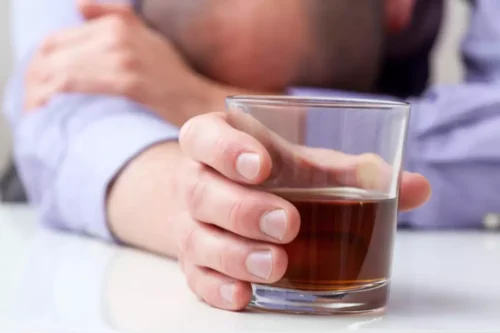
Increases in deaths from excessive alcohol use during the study period occurred among all age groups. A recent study found that one in eight total deaths among U.S. adults aged 20–64 years during 2015–2019 resulted from excessive alcohol use (9). Because of the increases in these deaths during 2020–2021, including among adults in the same age group, excessive alcohol use could account for an even higher proportion of total deaths during that 2-year period. In this study, fewer than one third of deaths from excessive alcohol use were from fully alcohol-attributable causes, highlighting the importance of also assessing partially alcohol-attributable causes to better understand the harms from excessive drinking, including binge drinking. Among females, the average annual number of deaths from excessive alcohol use increased by 15,136 (34.7%), from 43,565 during 2016–2017, to 58,701 during 2020–2021. Age-standardized alcohol-attributable average age of an alcoholic death rates among females increased from 22.7 per 100,000 population during 2016–2017 to 23.6 during 2018–2019, and to 29.4 during 2020–2021.

Understanding the Five Types of Alcoholics
Added to these costs is the toll on people’s health, quality of life, safety, and well-being. Excessive drinking has numerous impacts on your body and mind, ranging from mild to severe. American Addiction Centers (AAC) has facilities throughout the United States, and can provide a personalized treatment plan to meet your needs. Alcohol misuse and addiction can have harrowing and hazardous side effects at every phase. Whilst the World Health Organization (WHO) and most national guidelines typically quantify one unit of alcohol as equal to 10 grams of pure alcohol, the metric used as a ‘standard measure’ can vary across countries.
- The map shows heavy drinkers – those who had an episode of heavy drinking in the previous 30 days – as a share of total drinkers (i.e., those who have drunk less than one alcoholic drink in the last 12 months are excluded).
- Florida has an elevated alcohol-related death rate but one of the lowest rates of under-21 deaths.
- Researchers foundthat they have the highest rates of employment among alcoholics, with 68% working full-time and an average family income of nearly $50,000 a year.
- An intake of 60 grams of pure alcohol is approximately equal to 6 standard alcoholic drinks.
The health impact of alcohol
- Here, we see particularly high levels of alcohol abstinence across North Africa and the Middle East.
- Data on the share who don’t drink alcohol by gender and age group in the UK is available here.
- The information we provide is not intended to be a substitute for professional medical advice, diagnosis or treatment.
- While it is common for people to try alcohol in adolescence, alcohol use in teens can be detrimental to health and may affect brain development and mental health.
- Average annual number of deaths from excessive alcohol use increased 29.3%, from 137,927 during 2016–2017 to 178,307 during 2020–2021; age-standardized alcohol-related death rates increased from 38.1 to 47.6 per 100,000 population.
- For example, among those who meet the criteria for SUD—which may include symptoms like increased tolerance, repeated attempts to quit or control use, or social problems related to use–95% of adults did not seek treatment and didn’t think they needed it.
The death rates are typically higher in Eastern Europe and lower in North Africa and the Middle East. A century ago, some countries had much higher levels of alcohol consumption. In France in the 1920s, the average was 22.1 liters of pure alcohol per person per year. This equals 184 one-liter wine bottles per person per year.2 Note that in contrast to the modern statistics that are expressed in alcohol consumption per person older than 15 years, this includes children as well – the average alcohol consumption per adult was, therefore, even higher.
A Look at the Latest Alcohol Death Data and Change Over the Last Decade
Unless a person has pre-existing liver problems, this amount is generally pretty low-risk. Global data on the prevalence and effectiveness of alcohol use disorder treatment is incomplete. The breakdown of alcohol use disorders by gender for any country can be viewed here; the majority of people with alcohol use disorders – around three-quarters – are male.
Average number of drinks consumed

Economists as well as healthcare and addiction specialists agree the pandemic and quarantines of 2020 had a significant impact on nationwide alcohol consumption. They have anaverage age of 38 years, began drinking at almostage 17, and developed alcohol dependence at anaverage age of 32 years. Intermediate familial alcoholicsdrink on an average of 172 days a year, consumingfive or more drinks on 54% of those dayswith a maximum of 10 drinks. Evidence-based alcohol policies (e.g., reducing the number and concentration of places selling alcohol and increasing alcohol taxes) could help reverse increasing alcohol-attributable death rates.

Severe Alcohol Use Disorder
Explore topics related to alcohol misuse and treatment, underage drinking, the effects of alcohol on the human body, and more. Luxembourg’s healthcare spending is among the highest in Europe, with €4,316 per capita in 2022, compared to the European average of €3,533. The country offers good health coverage, with household healthcare expenditure representing only 1.7% of total household spending in 2022, well below the European average of 3.2%. However, the report identifies a need to improve the interconnectivity of national databases to enhance efficiency during crises across all countries in Europe. Alcohol-related liver disease, or cirrhosis, is caused when a person drinks too much alcohol for a long time. The prognosis for someone diagnosed with cirrhosis depends on whether and how much fibrosis and inflammation are present.

No and low-alcoholic beverages
This interactive map shows the annual average alcohol consumption of alcohol, expressed per person aged 15 years or older. To account for the differences in alcohol content of different alcoholic drinks (e.g., beer, wine, spirits), this is reported in liters of pure alcohol per year. If you find yourself drinking heavily (more than three to four servings per day), or binge drinking often (at least 4-5 drinks within 2 hours), you may be putting excess stress on your liver. While this may not cause immediate damage, problems like alcoholic hepatitis can happen surprisingly quickly.
The disease burden from alcohol use disorders
In the chart, we see the average consumption (in liters of ethanol) of different beverage types per person in the USA since the mid-nineteenth century. According to SevenFiftyDaily’s State of Whiskey report, 39% of whiskey drinkers are “between the ages of 21 and 35, and only 17 percent are over the age of 55.” While unflavored whiskeys grew by 3% between 2017 and 2022, flavored whiskeys increased by 11% during that period. More recently, for the 52 weeks ending September 2023, flavored whiskey sales grew by 1.9%. One factor contributing to an increased interest in flavored whiskeys has to do with, “in general” they are “going to skew a bit younger,” with some brands noticing an increase in consumers from aged 21 to their mid-30s being “drawn” to the product compared to more mature consumers. When asked if “they would be highly likely to switch to a more sustainable brand” if their favorite alcohol brand “was not using sustainable practices,” 34% of Gen X, 50% of Millennials, and 32% of Gen Z responded that they would do so. More recent data indicates that “63% of drinkers are concerned and active about sustainability/ sustainable products.”

